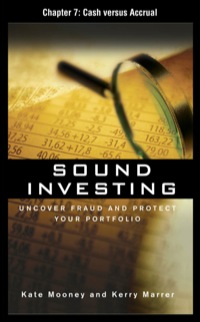Question
based on 2021 tax laws Z owns a rental building (its only asset) with a gross fair market value of $5,000 subject to the non-recourse
based on 2021 tax laws
Z owns a rental building (its only asset) with a gross fair market value of $5,000 subject to the non-recourse mortgage of $2,000. Z's adjusted basis for this building is $1,500. All of Z's stock is owned by C, whose basis for his stock in Z is $500. Z had 1,000 of E&P. Z is on the accrual method of accounting and reports on the calendar year. Assume that the corporate tax payable by Z on $3,500 gained is $735 and on $3,000 gained is $630. Z sells the building, subject to the mortgage, to D in the current year for $3,000 in cash. Z then liquidates, distributing all of the cash (remaining after paying its taxes) to C in cancellation of C's stock in the current year. OZ's gain on the sale of the building is $1,500. OZ's E&P goes over to purchaser, D, if D is a corporation. O Section 331 treats C as selling its stock to Z. O None of the above
Z owns a rental building (its only asset) with a gross fair market value of $5,000 subject to the non-recourse mortgage of $2,000. Z's adjusted basis for this building is $1,500. All of Z's stock is owned by C, whose basis for his stock in Z is $500. Z had 1,000 of E&P. Z is on the accrual method of accounting and reports on the calendar year. Assume that the corporate tax payable by Z on $3,500 gain is $1,250 and on $3,000 gained is $1,000. Z sells the building, subject to the mortgage, to D in the current year for $3,000 in cash. Z then liquidates, distributing all of the cash (remaining after paying its taxes) to C in cancellation of C's stock in the current year. Same facts as above, except that Z adopts a plan of complete liquidation instead of selling the building to D. Z distributes the building to C "in-kind" pursuant to the plan. C then sells the building to D for $3,000 in cash with D taking subject to the mortgage of $2.000. O Section 336 treats Z as selling the building to C for $5,000. OZ will recognize $3,500 gain which is probably ordinary under Section 1239. O C will take the property subject to both $2,000 mortgage and most likely a $735 tax due from Z to the IRS. O C's basis will be the fair market value of $5,000 under Section 334(a). O All of the above.
Z owns a rental building (its only asset) with a gross fair market value of $5,000 subject to the non-recourse mortgage of $2,000. Z's adjusted basis for this building is $1,500. All of Z's stock is owned by C, whose basis for his stock in Z is $500. Z had 1,000 of E&P. Z is on the accrual method of accounting and reports on the calendar year. Assume that the corporate tax payable by Z on $3,500 gained is $1,250 and on $3,000 gained is $1,000. Z sells the building, subject to the mortgage, to D in the current year for $3,000 in cash. Z then liquidates, distributing all of the cash (remaining after paying its taxes) to C in cancellation of C's stock in the current year. Same facts as above, except that Z adopts a plan of complete liquidation instead of selling the building to D. Z distributes the building to C "in-kind" pursuant to the plan. C then sells the building to D for $3,000 in cash with D taking subject to the mortgage of $2,000. Same facts as above, except that Z is an S Corporation and Section 1374 does not apply. O Zhas $1,500 gain O C has a $2,500 gain on the distribution. O C has a $1,000 ordinary loss on the distribution under Section 1244 if that section applies. O C has $1,000 capital loss O None of the above.
Z owns a rental building (its only asset) with a gross fair market value of $5,000 subject to the non-recourse mortgage of $2,000. Z's adjusted basis for this building is $1,500. All of Z's stock is owned by C, whose basis for his stock in Z is $500. Z had 1,000 of E&P. Z is on the accrual method of accounting and reports on the calendar year. Assume that the corporate tax payable by Z on $3,500 gained is $1,250 and on $3,000 gained is $1,000. Z sells the building, subject to the mortgage, to D in the current year for $3,000 in cash. Z then liquidates, distributing all of the cash (remaining after paying its taxes) to C in cancellation of C's stock in the current year. Same facts as above, except that D agrees to pay Z an additional contingent amount for the building in order to induce Z to sell. The gross fair market value of Z's property is actually $5,000. D also agrees to give a Z "contingent" right to receive from D an additional $2,500 over 10 years if D earns profits from the building in excess of profits historically earned O If the transaction is held open, Z will recognize $3,500 gain on the sale. O Upon collecting additional amounts from D, C will recognize additional capital gain. O Upon collecting additional amounts from D,. Z might also be expected to recognize additional gain, although Bitter & Eustice apparently take a contrary position. O None of the above. O All of the above, except D.
Step by Step Solution
There are 3 Steps involved in it
Step: 1

Get Instant Access to Expert-Tailored Solutions
See step-by-step solutions with expert insights and AI powered tools for academic success
Step: 2

Step: 3

Ace Your Homework with AI
Get the answers you need in no time with our AI-driven, step-by-step assistance
Get Started


